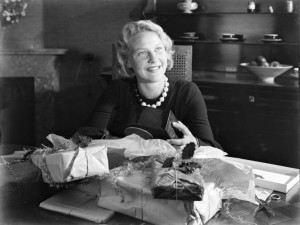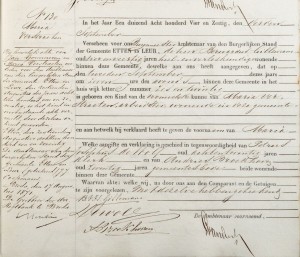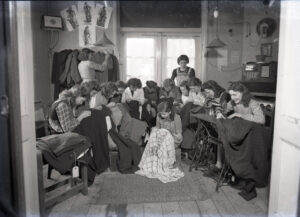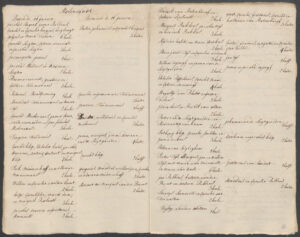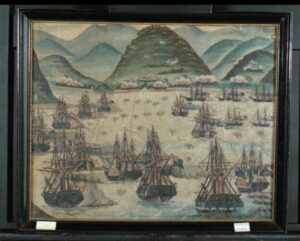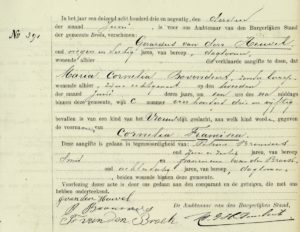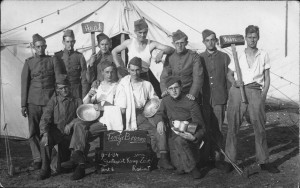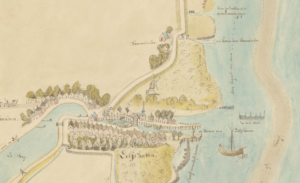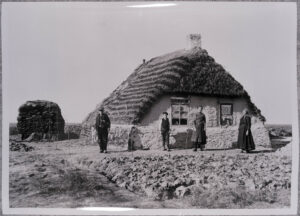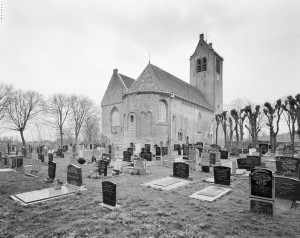Three months ago, I added a donation option to my free newsletter. The newsletter has continued to grow over the past years and outgrew the free service I was using. To my surprise and delight, more than a dozen people used the opportunity to donate. Thank you very much. I will use the donations for the mailing list provider and the hosting of the website. If you want to support the free information on this website and newsletter, here are some options to contribute: Donate via … [Read more...]
Quick tip – Snap shot or Video?
When you are looking at a record, ask yourself: was this record created all in one sitting? Or was this amended and updated over time? There are different types of records that were changed and updated over a longer period of time. In population registers, people who moved out or died were crossed out, and people who moved in or were born were added. In some types of tax or tithe records, owners of real estate would be updated if the property changed hands. In cadastral ledgers, plots that … [Read more...]
Dutch term – Naaien, naaister
Naaien means to sew. A naaister is a seamstress. In the past, professional naaisters were typically poor women, though women of all classes were taught the basics. Naaien could be done from home, and was an employment possible for women with young children. It is one of the few occupations open to women with children out of wedlock, who would rarely be welcome to work as servants in "respectable" households or stores. … [Read more...]
Source – Mill tax records
Before say 1800, taxes varied widely depending on the location. Several provinces instituted a mill tax; a tax on grinding grain. The tax could be levied in different ways. Often, a fixed sum was charged per head, with a reduced rate for children under 16. In some jurisdictions, the tax collector collected the taxes and recorded who paid what. In other jurisdictions, the tax was leased to the highest bidder, who would then collect the taxes and got to keep any profits above the paid sum. In … [Read more...]
Quick tip – Did he serve after all?
Sometimes, the marriage supplements will include a National Militia certificate that says the groom fulfilled his military service because he did not have to serve. It could be that his lot number was too high, or that he was exempted because a brother had served, for example. It is always a good idea to check the local enlistment records anyway, because sometimes they did not have to serve, but did so anyway. I recently had a case like this for a client. I saw the ancestor did not have to … [Read more...]
Quick tip – Witnesses are often not indexed
If you are using indexes of genealogical records, please keep in mind that the witnesses were often not indexed; only the main parties were. You can consult the original record to find the rest of the information. Knowing the witnesses is helpful since they may hold the vital clue to solving your brick walls. … [Read more...]
Dutch term – Groot verlof
Groot verlof means "grand leave." It is a term you may see in military records. Conscripts spent part of their military service in training and the rest on grand leave. Men on grand leave were still formally in the army though, and if they emigrated before they were discharged, they would be considered deserters. … [Read more...]
Dutch Genealogy News for June 2022
Here is an overview of all the sources, projects, and websites that were announced last month. Sources Almost 28,000 books have been digitized and added to Delpher. Most of the books are in the public domain and can be accessed online. More recent books can be consulted in the Royal Library reading room. Medieval manuscripts have been added to the online collections of the Athenaeum library of Deventer. Several civil registration records of Loon op Zand from the 1900s have been added … [Read more...]
Dutch term – Plaggenhut
A plaggenhut is a sod cabin; a house built using layers of topsoil. These houses were used by poor people, especially in the peaty areas in the north-east of the Netherlands where there was no natural stone or clay. … [Read more...]
Ask Yvette – Where to Find Dutch Church Records After 1811?
TL read the tip that you should check church records after 1811 and wants to know where these records are kept, particularly for the province of Groningen. When the civil registration was introduced in 1811 (or slightly earlier in some parts of the Netherlands), churches were required to turn over their registers of baptisms, marriages, and burial to the government. There is no such requirement for later church records. Although churches are free to determine where to keep their records, … [Read more...]
